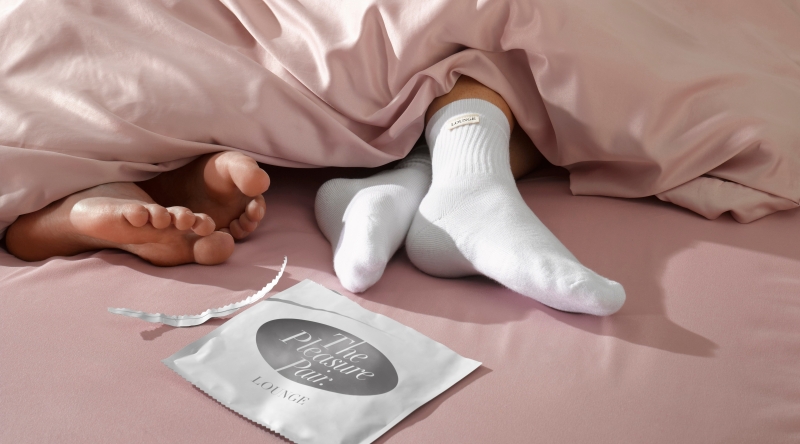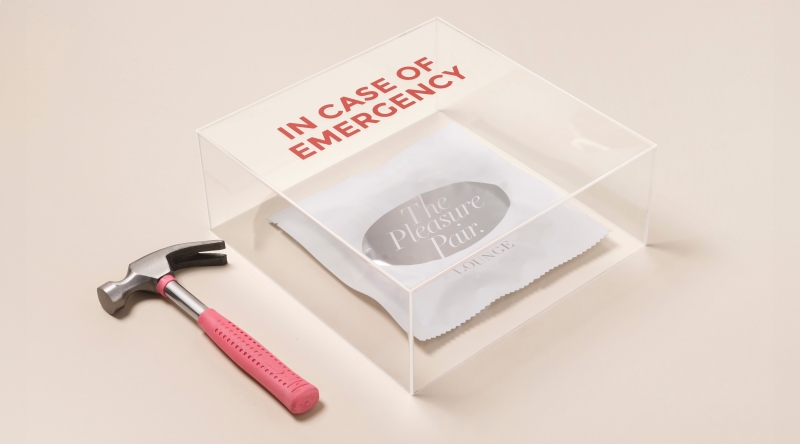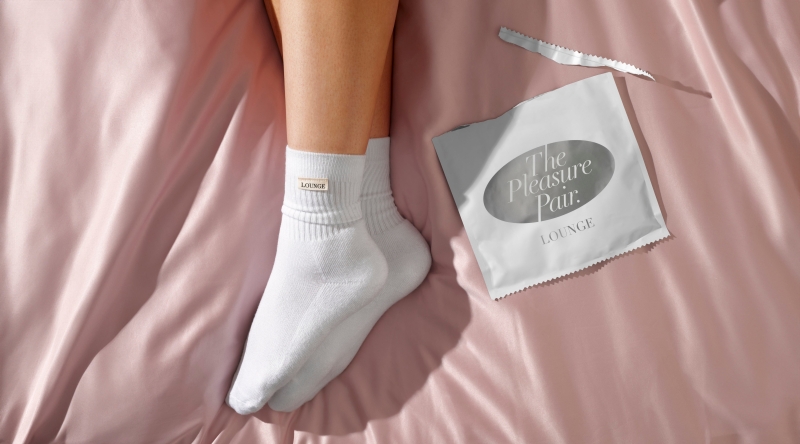Contents
What is the orgasm gap and how can we close it?
It’s time for a heart-to-heart, girls. When it comes to the big O, we’re not getting our fair share – and we think it’s about time we change that.
In keeping with National Orgasm Day, it’s time we explored the orgasm gap, and the data behind why we’re not having as many orgasms as our counterparts.
So, we went on a data deep-dive and did some exploring ourselves. We commissioned a survey through ONEPOLL, and what we found will surprise nobody.

What is the orgasm gap?

The ‘orgasm gap’ describes the disparity between how frequently men and women orgasm during sex. The biggest gap found is between heterosexual men and heterosexual women, with numerous studies over the years to illustrate this.
How much less likely are women to climax than men?
One of the original studies from 2017 showed that 95% of men said they usually or always climax compared with 65% of women.
Since then, there have been numerous studies showing similar results. In one piece of research examining about 800 uni students, 39% of women and 91% percent of men said that they usually or always experienced orgasm in partnered sex. More recently, a study by Durex found that 20% of women said they don’t orgasm, compared to just 2% of men.
The figures differ a little in each study, due to the number of participants, their ages and the location of the study, but the results across every piece of data we have on this subject show a distinct pattern.
Of course, the research doesn’t just apply to people who identify as heterosexual. Our survey revealed that only heterosexual women reported never orgasming with their partner and conversely, no same-sex or bisexual respondents made this claim. The pattern is clear: lesbian and bisexual women have significantly more orgasms than heterosexual women and so do gay and bisexual men. In every study, heterosexual women are having the fewest orgasms.
It’s important to note that all the data we have on this subject relates to partnered sex and orgasms with a partner. There are many studies that show that women are having plenty of orgasms when they masturbate alone. So why are women having more orgasms solo and with same-sex partners but far fewer with hetero partners? Sexologist Emilie Lavinia believes that the orgasm gap is a direct result of the education gap.
If a heterosexual man hasn’t received any education about female pleasure and the female body, it’s not going to be a win-win experience for him and his partner.
What affects women and their chances of reaching climax?
A lack of education also affects women. If sex isn’t discussed openly and pleasure is stigmatised, women aren’t able to speak up and ask for what they want in the bedroom. Not many people know that it takes an average of six to 20 minutes (an average of about 14 minutes) for women to reach orgasm.
The old trope ‘fake it until you make it’ is outdated. According to our survey, most women said they achieve an orgasm “once a week” whilst most men said they do “multiple times a week” – with many women feeling they have to fake it because they’re taking too long.
But, some basic education would mean fewer fake orgasms and far more real ones. If you take a while to get into it, that’s totally normal and there’s nothing wrong with you. Communicating this can feel uncomfortable, but talking about your likes, dislikes and the pace that suits you can make all the difference in closing the ‘gap’.
Women also face the effects of shame culture in a way that men simply don’t. Of course, men also face plenty of issues when it comes to sex, but the association with sex and shame is particularly pervasive for women. Women are regularly criticised for either being too sexually confident or not confident enough and feel ashamed for having sexual desires and healthy libidos.
Is there a link between comfort and sex? And what does it tell us?
There is absolutely a link between comfort and sex. Studies on arousal show us that the more relaxed a participant is, the quicker they’ll become aroused and the easier it will be for them to orgasm. Your surroundings contribute directly to your level of relaxation, so obviously, if you’re physically warm, cosy and comfortable, you’ll feel more at ease. Our survey found that 40% of women said that a comfortable environment is an important factor in being able to reach climax, compared to 33% of males.
With 49% of women also stating that they need to feel relaxed to achieve an orgasm, sex experts will always suggest slowing down, perhaps turning the big light off, putting on some mood music and making sure you feel warm and safe in your surroundings.

What’s the solution to the orgasm gap?
There are several ways we can close the orgasm gap, especially the significant gap that affects heterosexual women.
- Education for everyone
The more educated we are about sex and our bodies, the more we can enjoy and explore them. Make it your mission to ensure you’re as clued up as possible and that your partners are too. Learn as much as you can about your own body and make sure your partners know what they’re doing and how to make you climax.
- Encouraging sexual confidence and communication
This means taking pride in being a sexual human being and learning to ask for what you want. Don’t just fake an orgasm because your partner isn’t getting it right. Communicate to them that they’re not hitting the spot and show or tell them how to. Knowing your likes and dislikes, so you can give instructions and set boundaries, is really important.
- Ending shame culture
It’s tough to shake off years of shame and often women aren’t made to feel like they can be outwardly positive about sex, especially in certain cultures. However, having safe, consensual sexual experiences is totally normal, natural and healthy, for everyone. The less ashamed you feel of your enjoyment of sex, the more you’ll be able to relax and enjoy the experiences that you’re having. It can be hard to navigate this but it’s important to know that there’s no shame in sex or masturbation. It’s a natural thing that everyone does and as long as you’re safe and feel comfortable there’s nothing wrong with it.
- Choose partners who champion our pleasure and who make us feel relaxed
33% of women we surveyed listed being ‘comfortable with their partner’ as the most important factor in being able to reach an orgasm – and ultimately, you get to choose who you’re intimate with, so make good choices.
If you feel like a sexual partner isn’t prioritising your pleasure or is making you feel self-conscious or negative, you can either choose to address this and work through these issues together, or you can choose to find a partner who does make you feel relaxed.
- Choose scenarios and settings where we’ll feel comfortable
Similarly, if you don’t feel relaxed during your sexual experiences because of how your body feels or the space around you, you have the choice to speak up and say something. You’re not alone feeling like this; 40% of women said that a comfortable environment is an important factor in their ability to orgasm. You have the power to choose the circumstances and setting in which you have sexual experiences. Never let anyone pressure you into having sex or being intimate in a setting that makes you feel uncomfortable.
What are some of the most important factors to help reach an orgasm?
Everyone’s a little different when it comes to what turns them on, how quickly they experience arousal or how long it can take them to have an orgasm.
Generally, where you are in your menstrual cycle can affect how aroused you feel because of spikes in hormone levels throughout the month, and this can make it easier to orgasm at certain times than others. And your relaxation levels can affect how quickly you can reach orgasm too. This can be dependent on set and setting, so a neutral room temperature – not too hot and not too cold – can help.
Wearing something comfortable or having sex in comfortable surroundings can help, which is why most people favour the bedroom or somewhere comfy like the sofa. Our data suggests that more women prefer the lights off during sex, than men, highlighting the difference in comfortability that must be communicated.

Does wearing socks during sex lead to better orgasms?
There’s a study that’s shown that wearing socks can lead to better and more frequent orgasms. This is because when we’re warm, we feel more relaxed. Physical arousal also has a lot to do with our circulation. When our heart rate is up and our blood’s pumping, we feel warmer and our hormones signal to us that it’s time to relax our muscles. Keeping your socks on can speed up this process and help your body to maintain a consistent temperature. We found that 82% of women don’t wear socks during sex. We think feeling more comfortable in bed and with your partner can be physical and mental. So now you can have toe-curling orgasms with your partner, in some cosy bed socks.
